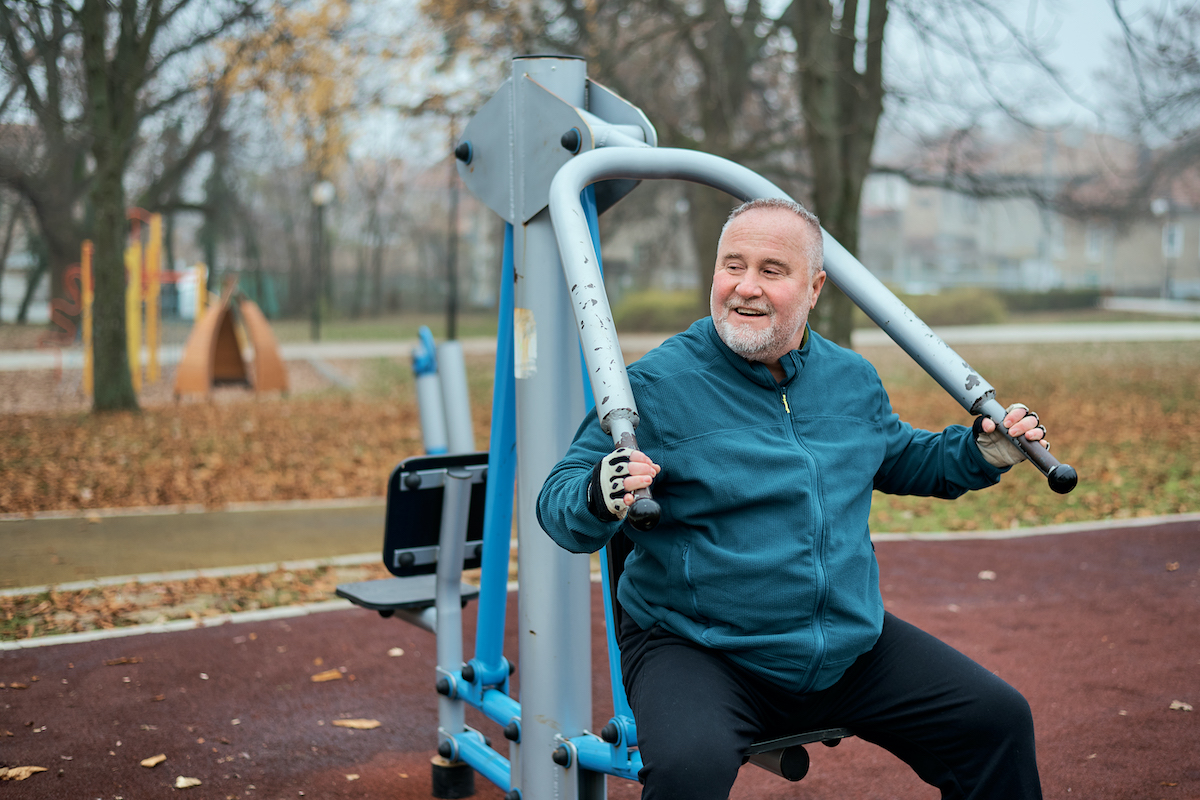Your Doc Says You Have Prediabetes. Now What?
Consider this your wake-up call for making some meaningful changes.

Some health conditions don’t come with warnings — they’re just very serious, very quickly. But for people who might be heading toward type 2 diabetes, fortunately there’s often a wake-up call: prediabetes.
According to the Centers for Disease Control and Prevention (CDC), prediabetes is a significant health concern on its own, because it’s a signal that you’re heading in the wrong direction. The condition involves blood sugar levels rising higher than they should be, but not high enough to be classified as type 2 diabetes.
What exactly is “higher than they should be?” The answer depends on which test your doctor uses. For two of the most common measurement methods — the A1C test and the fasting plasma glucose test — the National Institute of Diabetes and Digestive and Kidney Diseases says:
- Normal: A1C below 5.7 percent; fasting plasma glucose 99 mg/dL or below
- Prediabetes: A1C 5.7 to 6.4 percent; fasting plasma glucose 100 to 125 mg/dL
- Diabetes: A1C 6.5 percent or above; fasting plasma glucose 126 mg/dL or above
Prediabetes is common: The CDC reports that more than 1 in 3 American adults have it. And without intervention, prediabetes can develop into type 2 diabetes within five years of an initial diagnosis. But that’s not inevitable. With lifestyle changes, you can reverse the course of the condition and get your blood sugar level back to normal.
“Once you have prediabetes, the chances of progressing to diabetes are quite high, and it also raises your risk of developing heart disease, stroke, and kidney disease,” says Hien Tran, M.D., an endocrinologist with Texas Diabetes and Endocrinology. “So lifestyle changes that address your prediabetes are crucial for overall health.”
Get and stay fit with SilverSneakers! Choose from dozens of different Community classes, visit a participating fitness location, or view the current schedule of SilverSneakers LIVE online classes here.
If your doctor tells you that you have prediabetes, don’t wait to act. Consider these next steps.
Step 1: Learn More About Your Diet
Taking a close look at what you’re eating is important after a prediabetes diagnosis. The goal is to get your blood sugar level down to normal, and diet plays a huge role in that, Dr. Tran says.
A registered dietitian who has experience with prediabetes can help you make adjustments to your normal eating habits that work for you. They also will help make sure you have a good baseline knowledge of foods most likely to increase blood sugar. That doesn’t mean only unhealthy choices such as packaged foods or desserts. It could also mean limiting seemingly beneficial options such as whole-grain bread, yogurt, and some fruits.
Why? It’s all about carbohydrate content. After you eat them, carbs break down into sugars that are absorbed into the bloodstream. As your body’s sugar level rises, the pancreas releases a hormone called insulin, which helps blood sugar enter your cells so they can use it for energy. But when blood sugar is too high — possibly from eating too many simple carbs — your body may have trouble producing the insulin it needs to stay healthy.
That’s why it’s vital to manage your carb intake. Talk with your doctor or a registered dietitian about the right carb amount for you — it differs based on your age, weight, activity level, and other factors. Once you know, it’s helpful to track your intake using an app such as MyFitnessPal, MyPlate Calorie Counter, or Nutrients to stay within your target range.
Step 2: Ditch Sweetened Drinks
If there’s one simple diet change you can make immediately, it’s eliminating sweetened drinks, suggests Karen Graham, R.D., a certified diabetes educator and co-author of Diabetes Meals for Good Health Cookbook. Examples include:
- Regular soft drinks
- Sweetened coffee and tea drinks
- Fruit juices
- Sports and energy drinks
- Sweetened smoothies
- Milkshakes
These drinks provide a sugary spike with every sip. If you crave a smoothie, choose one made with whole fruits and vegetables that contain fiber, and protein such as unsweetened Greek yogurt, flaxseed, or natural nut butter. The combination can help slow down digestion, make you feel fuller longer, and regulate blood sugar, according to the Cleveland Clinic.
This doesn’t mean plain water is your only option. Try these tips for adding flavor to your coffee without sugar or mix up one of these fiber-packed smoothies.
Step 3: Get at Least 150 Minutes of Exercise per Week
Another big change you should make is increasing your physical activity, Graham says. That’s true even if you already take walks or do other activities.
“If you do aerobic exercise or walk for about 15 minutes a day, increase it to 30 minutes,” she suggests. “You can either do one longer walk or add in a second walk.”
Dr. Tran adds that you can choose from a range of other movement options — the type of exercise you do matters less than simply doing something. Your goal should be at least 150 minutes of moderate activity per week, or 30 minutes a day, five days per week. All the following options count:
- Bike riding
- Swimming
- Hiking
- Dancing
- SilverSneakers classes
- Strength training
- Yoga or tai chi
Incorporating more movement into your day can be very helpful for regulating blood sugar, Dr. Tran says. It can also help you get on track to lose weight if needed, which is key for keeping your blood sugar level steady and lowering the risk of developing type 2 diabetes.
Subscribe to our newsletter
It's quick and easy. You could be one of the 13 million people who are eligible.
Already a member? Click to discover our 15,000+ participating locations.
Follow Us
Researchers at Johns Hopkins University found that overweight people with prediabetes who lost roughly 10 percent of their body weight within six months of a diagnosis reduced their risk of developing type 2 diabetes over the next three years by up to 85 percent. Those who lost 5 percent to 7 percent of their body weight — 10 to 14 pounds for a 200-pound person — reduced their risk by 54 percent three years later.
Step 4: Find a Local Diabetes Prevention Program
The CDC offers the National Diabetes Prevention Program (National DPP), which provides support and resources to help you make healthy changes such as increasing your physical activity, tweaking your grocery list, and managing stress. The lifestyle change program has been shown to lower the risk of getting type 2 diabetes by more than 70 percent for people over 60.
Use this tool to find a program near you — many are covered, at least in part, by insurance plans.
Not a fan of group programs? You can put together your own toolkit of health care professionals and online resources. First, talk to your doctor about a referral to a diabetes educator who can introduce you to other helpful tools and classes.
Step 5: Be Your Own Health Advocate
Seeing changes in your prediabetes status can take time, but that doesn’t mean you should wait for your doctor to check in on you occasionally. Take charge of your health by asking your doctor or health care provider how often to get your blood sugar tested, suggests Mansur Shomali, M.D., an endocrinologist and a co-author of Complete Diabetes Guide.
At a minimum, you should have an annual physical that checks your blood sugar, cholesterol, blood pressure, and A1C — which gives you an average for blood sugar over three months.
“This will let you know how well you’re doing and whether you need to make further changes,” Dr. Shomali says. “Most of all, take it seriously. Please don’t wait until you have full-blown diabetes. Make lifestyle changes now.”
Check Your SilverSneakers Eligibility Instantly
SilverSneakers members can go to thousands of gyms and fitness locations across the nation, plus take SilverSneakers LIVE online classes that are designed for seniors of all levels. If you have a Medicare plan, it may include SilverSneakers — at no additional cost. Check your eligibility instantly here.
Not eligible for SilverSneakers? You can still get 200+ free SilverSneakers On-Demand videos and stay in touch with us by creating your online account.





